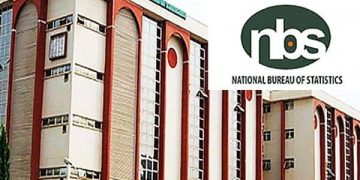The Federal Reserve has lowered interest rates by 25 basis points for the second consecutive meeting, bringing the benchmark federal funds rate to a target range of 3.75% to 4.00%. The move comes as the ongoing government shutdown leaves policymakers without crucial economic data, forcing the central bank to rely on private reports and market signals instead of official statistics.
Fed Acts Amid Data Shortage
With the shutdown now in its fourth week, essential releases from agencies such as the Bureau of Labor Statistics and the Commerce Department have been delayed. This has deprived the Fed of up-to-date insights on inflation, employment, and consumer spending. Analysts describe the situation as “monetary policy in the dark,” with the central bank attempting to navigate without reliable information.
Despite the limited visibility, the decision suggests that the Federal Reserve remains concerned about slowing growth and softening labor conditions. Job creation has weakened, unemployment has crept up to around 4.3%, and business investment continues to cool.
Balancing Inflation and Growth Risks
Although inflation remains slightly above the Fed’s 2% target, several private indicators point to a gradual easing in price pressures. Still, the uncertainty surrounding the government shutdown has heightened fears of a potential slowdown.
Most market participants had anticipated today’s move, with investors largely pricing in a quarter-point cut well before the meeting. The central bank’s decision reinforces its cautious stance as it seeks to sustain economic momentum while guarding against persistent inflation.
Internal Divisions at the Fed
The Federal Open Market Committee (FOMC) was divided in its vote. While a majority supported the 25-basis-point cut, a few members pushed for either a larger reduction or no change at all. The split highlights ongoing debate about how aggressively to support the economy during a period of data uncertainty.
In its official statement, the Fed acknowledged that “economic uncertainty remains elevated” and reaffirmed that future policy moves will depend on incoming data once government reporting resumes.
Market and Investor Reactions
Financial markets reacted modestly to the announcement. U.S. stocks rose slightly, while Treasury yields declined as investors interpreted the decision as a signal that the Fed remains focused on stabilizing growth. Analysts, however, warned that acting with incomplete data could increase the risk of future policy errors if inflation or employment trends shift unexpectedly.
Impact on Consumers and Businesses
The rate cut is expected to provide mild relief to borrowers. Mortgage, auto loan, and credit card rates could edge lower, making it slightly cheaper for consumers to borrow. Businesses may benefit from reduced financing costs, which could encourage new investments. On the other hand, savers will likely see weaker returns on deposits as banks adjust to lower interest rates.




















































